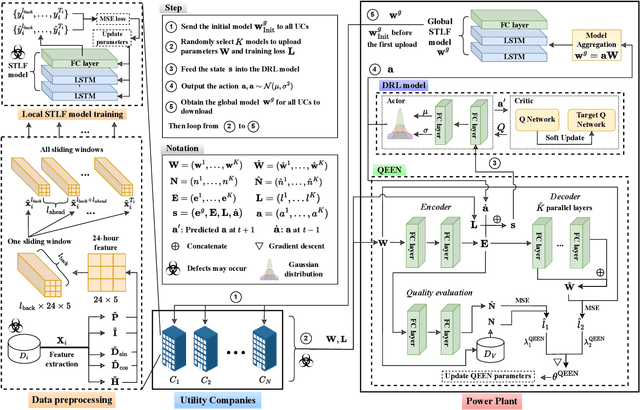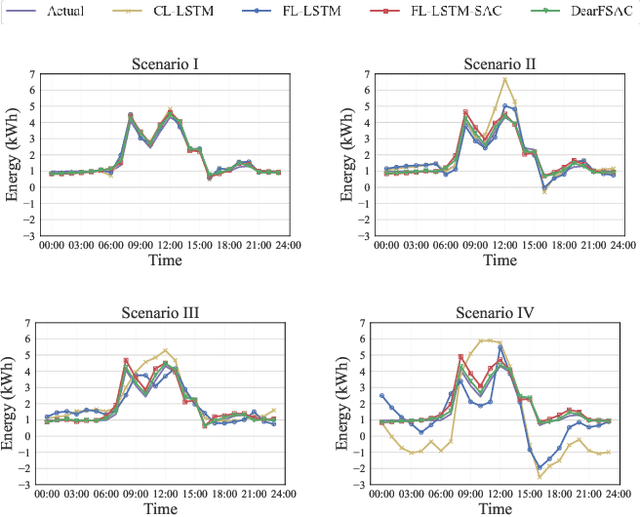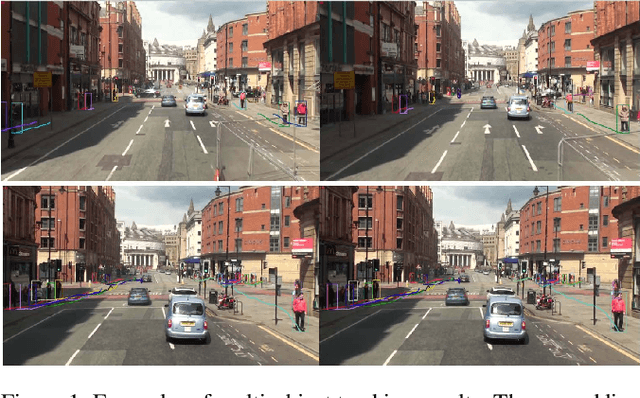Xiaoyi Wang
Improve Decoding Factuality by Token-wise Cross Layer Entropy of Large Language Models
Feb 05, 2025Abstract:Despite their impressive capacities, Large language models (LLMs) often struggle with the hallucination issue of generating inaccurate or fabricated content even when they possess correct knowledge. In this paper, we extend the exploration of the correlation between hidden-state prediction changes and output factuality into a deeper, token-wise level. Based on the insights , we propose cross-layer Entropy eNhanced Decoding (END), a decoding method that mitigates hallucinations without requiring extra training. END leverages inner probability changes across layers to individually quantify the factual knowledge required for each candidate token, and adjusts the final predicting distribution to prioritize tokens with higher factuality. Experiments on both hallucination and QA benchmarks demonstrate that END significantly enhances the truthfulness and informativeness of generated content while maintaining robust QA accuracy. Moreover, our work provides a deeper perspective on understanding the correlations between inherent knowledge and output factuality.
Children's Acquisition of Tail-recursion Sequences: A Review of Locative Recursion and Possessive Recursion as Examples
Dec 28, 2024Abstract:Recursion is the nature of human natural language. Since Chomsky proposed generative grammar, many scholars have studied recursion either theoretically or empirically. However, by observing children's acquisition of tail recursion sequences, we can verify the nativism of language supported by universal grammar and reveal the cognitive mechanism of human brain. To date, our understanding of children's acquisition path of recursion and influencing factors still remain controversial. This systematic review summarizes the research of tail recursive sequence by taking possessive recursion and locative recursion as examples, focusing on the experimental methods, acquisition paths, and influencing factors of tail recursive sequence. The current behavioural experiments reveal that, the debate about children's performance revolves around: 1) Gradual acquisition or synchronous acquisition. 2) symmetry or asymmetry between the acquisition of locative recursion sequences and possessive recursion sequences. We presume that children can acquire recursion quickly in a short period of time thanks to the language acquisition device, though there are also scholars who believe that a third factor also plays a role.
Acquisition of Recursive Possessives and Recursive Locatives in Mandarin
Dec 21, 2024Abstract:As recursion has been underlying any linguistic work for the last 60 years, the acquisition of recursive structures by children during language learning has become a focal point of inquiry. This study delves into the developmental trajectory of Mandarin-speaking children's acquisition of recursive possessives and locatives, assessing the impact of structural diversity on language acquisition. The research contrasts the comprehension of two-level recursive structures among children aged 3 to 7 years, employing answering question while seeing a picture task to elicit responses. The findings indicate that children do not attain adult-like proficiency in two-level recursion until the age of 6, and there exists a notable asymmetry in the acquisition of recursive possessives versus locatives. These results underscore the primacy of structural complexity and cognitive factors in the acquisition process, enhancing our comprehension of the cognitive foundations of language development and the pivotal role of recursion in child language acquisition.
AdvLogo: Adversarial Patch Attack against Object Detectors based on Diffusion Models
Sep 11, 2024Abstract:With the rapid development of deep learning, object detectors have demonstrated impressive performance; however, vulnerabilities still exist in certain scenarios. Current research exploring the vulnerabilities using adversarial patches often struggles to balance the trade-off between attack effectiveness and visual quality. To address this problem, we propose a novel framework of patch attack from semantic perspective, which we refer to as AdvLogo. Based on the hypothesis that every semantic space contains an adversarial subspace where images can cause detectors to fail in recognizing objects, we leverage the semantic understanding of the diffusion denoising process and drive the process to adversarial subareas by perturbing the latent and unconditional embeddings at the last timestep. To mitigate the distribution shift that exposes a negative impact on image quality, we apply perturbation to the latent in frequency domain with the Fourier Transform. Experimental results demonstrate that AdvLogo achieves strong attack performance while maintaining high visual quality.
The syntax-semantics interface in a child's path: A study of 3- to 11-year-olds' elicited production of Mandarin recursive relative clauses
Jun 06, 2024Abstract:There have been apparently conflicting claims over the syntax-semantics relationship in child acquisition. However, few of them have assessed the child's path toward the acquisition of recursive relative clauses (RRCs). The authors of the current paper did experiments to investigate 3- to 11-year-olds' most-structured elicited production of eight Mandarin RRCs in a 4 (syntactic types)*2 (semantic conditions) design. The four syntactic types were RRCs with a subject-gapped RC embedded in an object-gapped RC (SORRCs), RRCs with an object-gapped RC embedded in another object-gapped RC (OORRCs), RRCs with an object-gapped RC embedded in a subject-gapped RC (OSRRCs), and RRCs with a subject-gapped RC embedded in another subject-gapped RC (SSRRCs). Each syntactic type was put in two conditions differing in internal semantics: irreversible internal semantics (IIS) and reversible internal semantics (RIS). For example, "the balloon that [the girl that _ eats the banana] holds _" is SORRCs in the IIS condition; "the monkey that [the dog that _ bites the pig] hits_" is SORRCs in the RIS condition. For each target, the participants were provided with a speech-visual stimulus constructing a condition of irreversible external semantics (IES). The results showed that SSRRCs, OSRRCs and SORRCs in the IIS-IES condition were produced two years earlier than their counterparts in the RIS-IES condition. Thus, a 2-stage development path is proposed: the language acquisition device starts with the interface between (irreversible) syntax and IIS, and ends with the interface between syntax and IES, both abiding by the syntax-semantic interface principle.
Automatic Tissue Traction with Haptics-Enabled Forceps for Minimally Invasive Surgery
Jan 25, 2024Abstract:A common limitation of autonomous tissue manipulation in robotic minimally invasive surgery (MIS) is the absence of force sensing and control at the tool level. Recently, our team has developed haptics-enabled forceps that can simultaneously measure the grasping and pulling forces during tissue manipulation. Based on this design, here we further present a method to automate tissue traction with controlled grasping and pulling forces. Specifically, the grasping stage relies on a controlled grasping force, while the pulling stage is under the guidance of a controlled pulling force. Notably, during the pulling process, the simultaneous control of both grasping and pulling forces is also enabled for more precise tissue traction, achieved through force decoupling. The force controller is built upon a static model of tissue manipulation, considering the interaction between the haptics-enabled forceps and soft tissue. The efficacy of this force control approach is validated through a series of experiments comparing targeted, estimated, and actual reference forces. To verify the feasibility of the proposed method in surgical applications, various tissue resections are conducted on ex vivo tissues employing a dual-arm robotic setup. Finally, we discuss the benefits of multi-force control in tissue traction, evidenced through comparative analyses of various ex vivo tissue resections. The results affirm the feasibility of implementing automatic tissue traction using micro-sized forceps with multi-force control, suggesting its potential to promote autonomous MIS. A video demonstrating the experiments can be found at https://youtu.be/8fe8o8IFrjE.
Extraction of Vascular Wall in Carotid Ultrasound via a Novel Boundary-Delineation Network
Jul 28, 2022



Abstract:Ultrasound imaging plays an important role in the diagnosis of vascular lesions. Accurate segmentation of the vascular wall is important for the prevention, diagnosis and treatment of vascular diseases. However, existing methods have inaccurate localization of the vascular wall boundary. Segmentation errors occur in discontinuous vascular wall boundaries and dark boundaries. To overcome these problems, we propose a new boundary-delineation network (BDNet). We use the boundary refinement module to re-delineate the boundary of the vascular wall to obtain the correct boundary location. We designed the feature extraction module to extract and fuse multi-scale features and different receptive field features to solve the problem of dark boundaries and discontinuous boundaries. We use a new loss function to optimize the model. The interference of class imbalance on model optimization is prevented to obtain finer and smoother boundaries. Finally, to facilitate clinical applications, we design the model to be lightweight. Experimental results show that our model achieves the best segmentation results and significantly reduces memory consumption compared to existing models for the dataset.
Deep Reinforcement Learning-Assisted Federated Learning for Robust Short-term Utility Demand Forecasting in Electricity Wholesale Markets
Jun 23, 2022



Abstract:Short-term load forecasting (STLF) plays a significant role in the operation of electricity trading markets. Considering the growing concern of data privacy, federated learning (FL) is increasingly adopted to train STLF models for utility companies (UCs) in recent research. Inspiringly, in wholesale markets, as it is not realistic for power plants (PPs) to access UCs' data directly, FL is definitely a feasible solution of obtaining an accurate STLF model for PPs. However, due to FL's distributed nature and intense competition among UCs, defects increasingly occur and lead to poor performance of the STLF model, indicating that simply adopting FL is not enough. In this paper, we propose a DRL-assisted FL approach, DEfect-AwaRe federated soft actor-critic (DearFSAC), to robustly train an accurate STLF model for PPs to forecast precise short-term utility electricity demand. Firstly. we design a STLF model based on long short-term memory (LSTM) using just historical load data and time data. Furthermore, considering the uncertainty of defects occurrence, a deep reinforcement learning (DRL) algorithm is adopted to assist FL by alleviating model degradation caused by defects. In addition, for faster convergence of FL training, an auto-encoder is designed for both dimension reduction and quality evaluation of uploaded models. In the simulations, we validate our approach on real data of Helsinki's UCs in 2019. The results show that DearFSAC outperforms all the other approaches no matter if defects occur or not.
Optimizing Memory Efficiency of Graph Neural Networks on Edge Computing Platforms
Apr 12, 2021



Abstract:Graph neural networks (GNN) have achieved state-of-the-art performance on various industrial tasks. However, the poor efficiency of GNN inference and frequent Out-Of-Memory (OOM) problem limit the successful application of GNN on edge computing platforms. To tackle these problems, a feature decomposition approach is proposed for memory efficiency optimization of GNN inference. The proposed approach could achieve outstanding optimization on various GNN models, covering a wide range of datasets, which speeds up the inference by up to 3x. Furthermore, the proposed feature decomposition could significantly reduce the peak memory usage (up to 5x in memory efficiency improvement) and mitigate OOM problems during GNN inference.
GAKP: GRU Association and Kalman Prediction for Multiple Object Tracking
Dec 28, 2020



Abstract:Multiple Object Tracking (MOT) has been a useful yet challenging task in many real-world applications such as video surveillance, intelligent retail, and smart city. The challenge is how to model long-term temporal dependencies in an efficient manner. Some recent works employ Recurrent Neural Networks (RNN) to obtain good performance, which, however, requires a large amount of training data. In this paper, we proposed a novel tracking method that integrates the auto-tuning Kalman method for prediction and the Gated Recurrent Unit (GRU) and achieves a near-optimum with a small amount of training data. Experimental results show that our new algorithm can achieve competitive performance on the challenging MOT benchmark, and faster and more robust than the state-of-the-art RNN-based online MOT algorithms.
 Add to Chrome
Add to Chrome Add to Firefox
Add to Firefox Add to Edge
Add to Edge